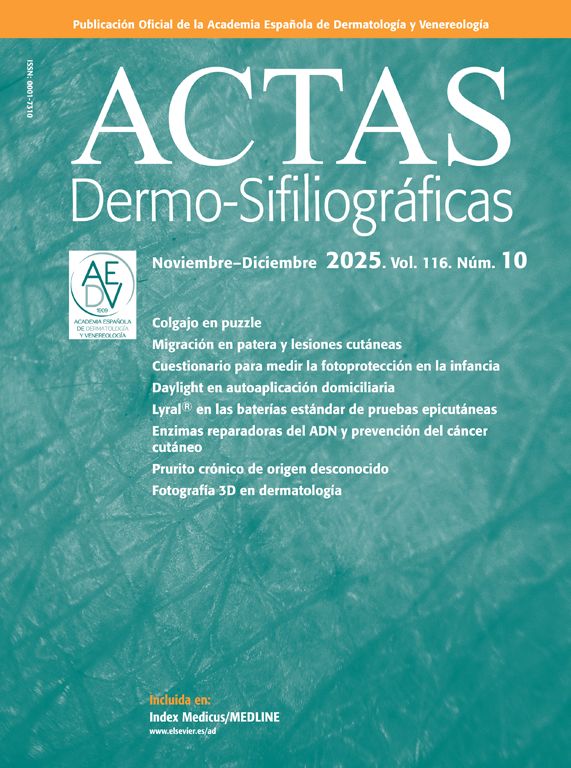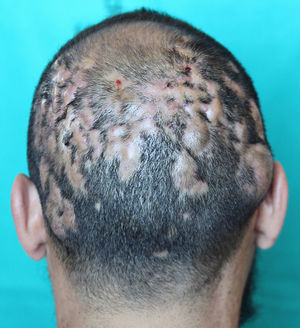A 38-year-old Caucasian male presented to our department with 8 months of progressive painful subcutaneous nodules and abscesses in occipital scalp that caused numerous areas of alopecia (Figure 1). He had received treatment with isotretinoin due to acne conglobata two years back. Skin-biopsy specimen revealed a deep, chronic inflammatory infiltrate affecting the inferior portion of hair follicles. PAS, Groccott and Ziehl-Nieelsen stains were negative. Bacterial, mycobacterial and mycotic biopsy cultures were also negative. Thus, dissecting cellulitis of the scalp was diagnosed. This pathology is defined as a chronic suppurative dermatosis of the scalp; it is more frequent in young afro-descendant males; originating from follicular occlusion that causes progressive communicating abscesses that dissect the scalp, resulting in areas of scarring alopecia. Trichoscopy is also an useful diagnostic tool in dissecting cellulitis, showing yellow, structureless areas and yellow dots with “3D” structure imposed over dystrophic hair shafts as most characteristic findings. The patient began treatment with oral isotretinoin 0.7mg/kg/day and therapy was maintained for 6 months with adequate control of the disease after 2 months of treatment.
El factor de impacto mide la media del número de citaciones recibidas en un año por trabajos publicados en la publicación durante los dos años anteriores.
© Clarivate Analytics, Journal Citation Reports 2025
SJR es una prestigiosa métrica basada en la idea de que todas las citaciones no son iguales. SJR usa un algoritmo similar al page rank de Google; es una medida cuantitativa y cualitativa al impacto de una publicación.
Ver másSNIP permite comparar el impacto de revistas de diferentes campos temáticos, corrigiendo las diferencias en la probabilidad de ser citado que existe entre revistas de distintas materias.
Ver más




